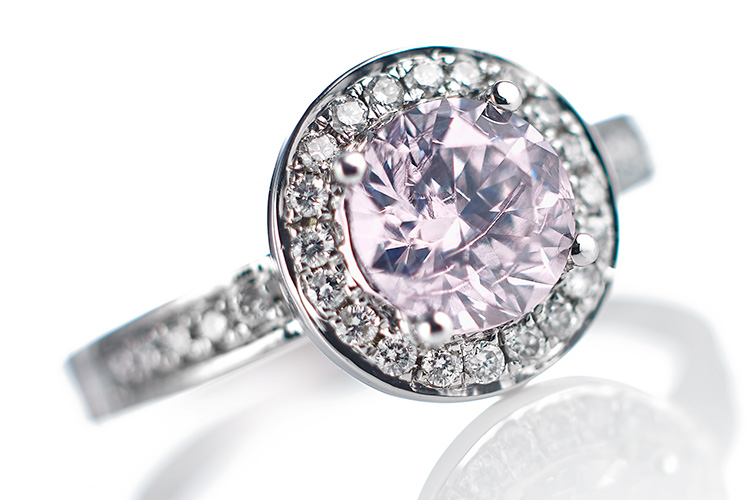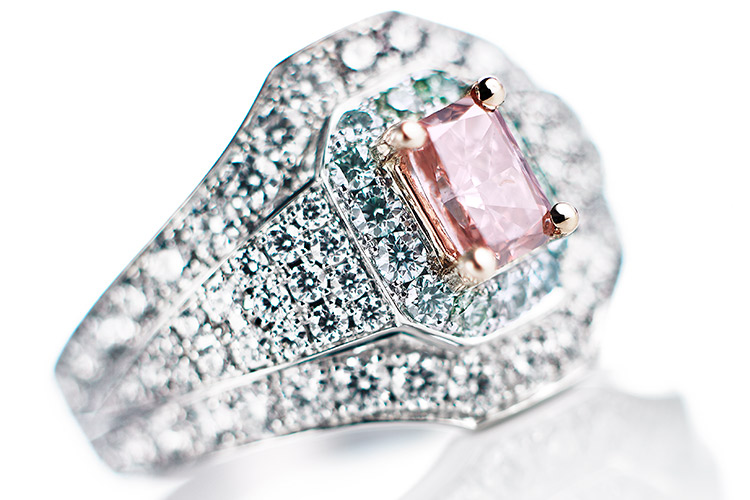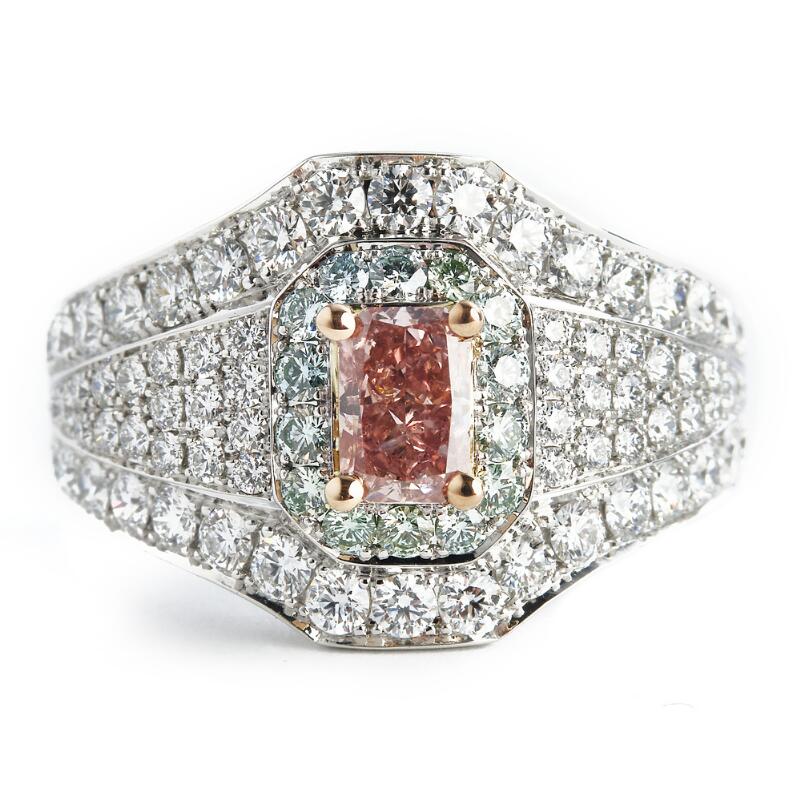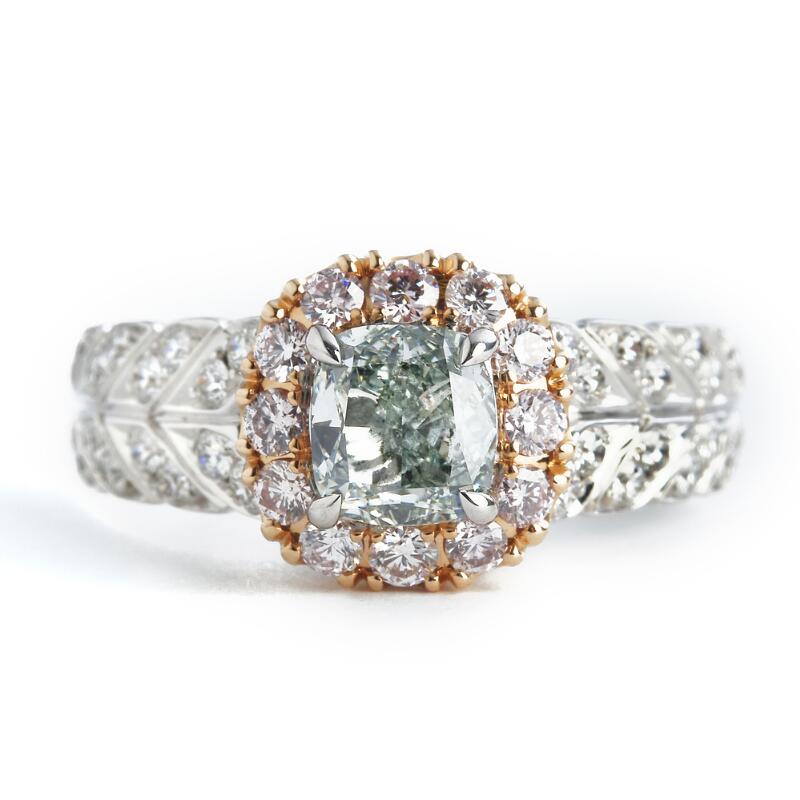Diamonds Coloured by Nature
Only one in 10,000 diamonds is naturally coloured, and they are therefore extremely precious. In recent years, pink, blue, green and yellow diamonds have become sought after on the auction market, and right now we place a spotlight on these little beauties with a small exclusive selection.
The vast majority of diamonds are colourless or slightly yellow in colour, while the naturally coloured diamonds are rarer, to say the least. Diamonds coloured by nature have been found primarily in mines in India, South Africa, Australia, Indonesia, Brazil, Venezuela and Guyana. A completely colourless diamond consists of 100% carbon, which over a period of millions of years has been formed under enormous pressure, usually more than 150 kilometres below the earth's surface. A coloured diamond occurs as a result of various chemical processes in nature, such as radiation or when the carbon is mixed with substances like boron and nitrogen.
The naturally coloured diamonds exist in all colours, but the most sought after are red, green, purple, orange, pink and blue diamonds. Throughout history, these diamonds have been considered precious ornaments and collector’s items for the upper strata of society. The first grading system for coloured diamonds was developed as early as the 16th century in India, where the colours each represented their own level in the Hindu caste system. Therefore, people could only wear the coloured diamond that was assigned to their caste, and it was only the Indian monarchs who had a free choice when it came to the coloured diamonds.
Two Legendary Diamonds
The world's most famous gemstone is the blue "Hope" diamond. Its history dates back to 1642, where the French gemstone merchant Jean-Baptiste Tavernier bought a large blue diamond in rough form in India. He sold it to Louis XIV, who had it cut into various parts for "The French Blue". Some of the diamonds became part of the French crown jewels, which in 1792 were stolen from the royal house. The "Hope" diamond is believed to originate from Tavernier's diamond, and it was purchased in 1949 by American jeweller Harry Winston, who donated it to the Smithsonian Institution in Washington D.C., where it is still located today. The "Hope" diamond is rumoured to be cursed and has over time been blamed for causing death and destruction for its various owners.
Another famous diamond is "The Pink Star", which in 2017 achieved the status of being the world's most expensive gemstone after an auction sale in Hong Kong of USD 71.2 million. It was found in South Africa back in 1999 and totals no less than 59.60 ct. It is classified as "Fancy Vivid Pink" by GIA, the Gemological Institute of America.
Grading of Coloured Diamonds
White and slightly yellow diamonds are classified based on the four Cs: "carat", "colour", "clarity" and "cut", as well as on a colour scale that goes from D to Z, where D stands for the whitest colour and Z for the most yellow. The more colour they have, the less expensive they are. The opposite is true when it comes to the coloured diamonds, whose value increases according to the intensity of their colour. Unlike the white diamonds, they are therefore not classified based on their clarity, but on how intense a colour they have. GIA has developed a grading system to determine the quality of coloured diamonds used today around the world. In this system, there are 27 different colours, and each diamond is assessed based on three parameters: hue, tone and saturation. The degree of saturation is described with terms such as "fancy light" or "fancy intense".
Pink Diamonds from the Argyle Mine
|
Only about 0.01% of all diamonds are pink, and out of these pink wonders, 90% come from the Argyle mine in Kimberley in Western Australia. The mine is one of the world's largest diamond mines, and since its opening in 1985, naturally coloured diamonds have been found here that range in hues from faint pink to fancy deep blue-violet. Diamonds from Argyle are extremely rare, and the fact that Argyle will close at the end of 2020 means that diamonds from the mine are expected to become even more expensive and coveted in the coming years. At the auction, we have a sumptuous diamond ring of 18k white gold with a pink diamond of 0.71 ct. from the Argyle mine. Only 50 of the pink diamonds found each year at the diamond mine weigh more than 0.50 ct., so this is a bit of a rare item on the auction market. The pink diamond is surrounded by numerous fancy blue diamonds totalling 0.29 ct. They were found in a river mine in the South American country of Guyana. A GIA certificate has been obtained for the ring back in 2017. |
|
|
Blue and Green Diamonds from the River
|
Also coveted on the market are the naturally coloured green diamonds, which have acquired their colour either as a result of radiation exposure in nature or because part of the gemstone consists of nitrogen, hydrogen or nickel. Most of the green diamonds are today mined in South America and Africa. Since the 1940s, laboratories around the world have attempted to imitate naturally coloured diamonds by adding artificial radiation to white diamonds. This has made the gemological studies of green gemstones difficult, and today only GIA can grade green diamonds. It is a slow process based on a huge database of materials and samples for this type of gemstone. |
|
|
|
At the auction, we have a beautiful diamond ring with a cushion-cut natural green diamond of 1.16 ct. from the same river mine in Guyana as the aforementioned blue diamonds. It took GIA six months to prepare the accompanying diamond report for this spectacular green gemstone. The colour of it comes from natural radiation, and to reach this final conclusion in the report, it had to be tested at the institute over three rounds – in its rough form, after the cutting and again after the polishing. |


Book a visit to the preview and auction
For English speakers, please contact our customer service at customerservices@bruun-rasmussen.dk
For further information, please contact:
Katrin Mikkelsen Sørensen: +45 8818 1174 · kms@bruun-rasmussen.dk
Lise Jacobsen: +45 8818 1175 · lij@bruun-rasmussen.dk


